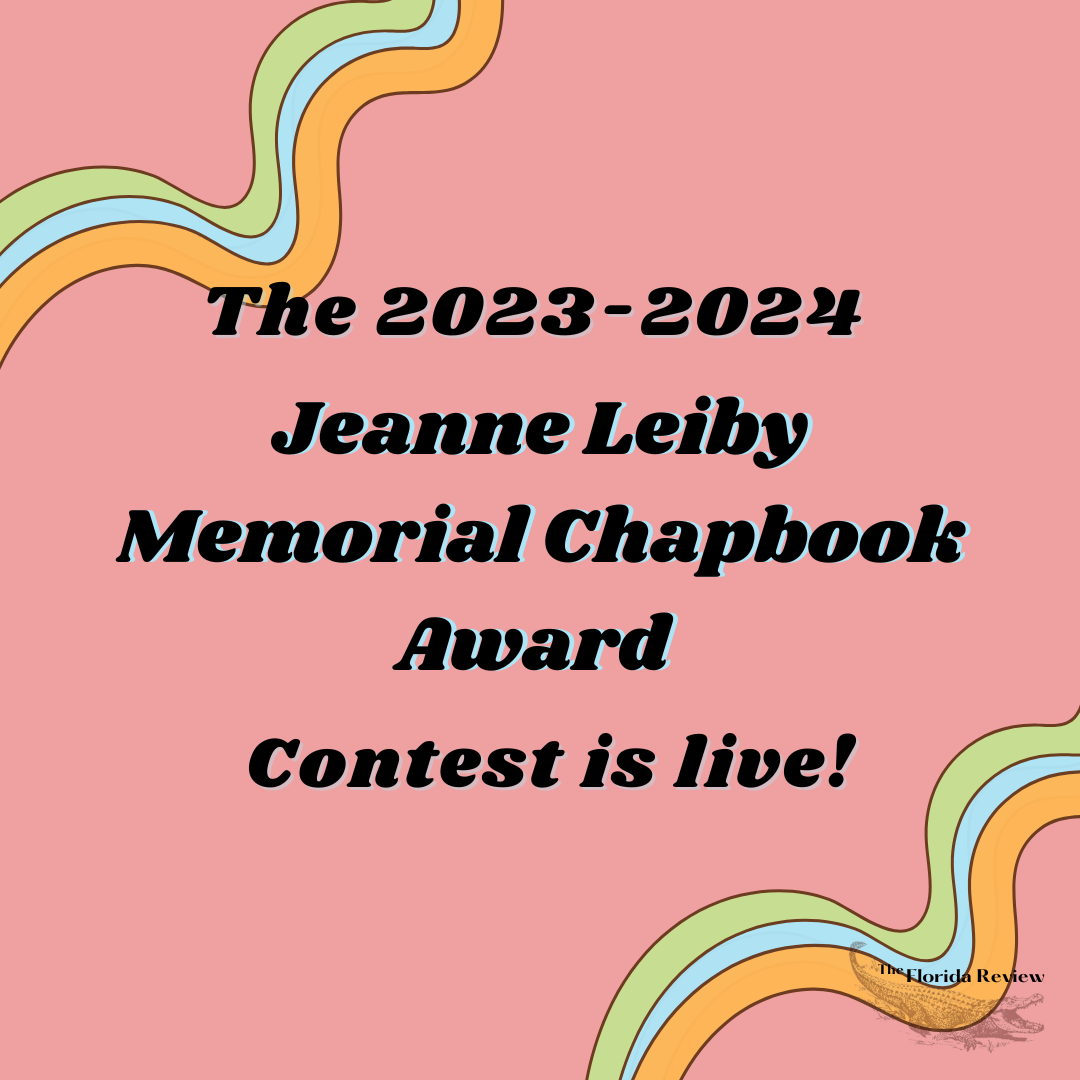
Melanie Bishop is the author of Home for Wayward Girls, winner of the 2021-2022 Jeanne Leiby Memorial Chapbook Award. Home for Wayward Girls is narrated by Amelia, a young girl, and follows a family during a tumultuous time as they open their home to a couple of girls who are in need. As Amelia’s family takes in these girls, she explores what it means to be a female growing up in the South.
Below is an interview with Bishop and Nicole Neece, a PhD student in the University of Central Florida’s Texts and Technology Program.
NEECE: In a 2013 entry on your website, you note that you went through “at least three, and at most ten, drafts of every story” in your larger short story cycle, Home for Wayward Girls, from which the title story, and the contents of this chapbook, emerges. What element(s) did you find yourself revisiting most during your revision process?
BISHOP: While the chapbook published for the Jeanne Leiby Award contains only one short story, the entire story cycle in the question goes by the same title and contains eight stories, just under 200 pages. So, in most of what we discuss here, I’ll be referencing the short story, “Home for Wayward Girls,” with brief mentions of other stories in the cycle.

A few years into marketing this book, I started to see it as more of a cycle than a collection, and I wondered if it might be more marketable as such. When reseeing the book as a cycle of connected stories, many things needed attention: the adherence to some central notion; the sequence; the overlap; the characters who appeared in multiple stories requiring consistent names throughout; and I had to think about whether every story was earning its keep, contributing something new to the whole. As a collection, the book was a finalist in two contests at that point, under the title The Kind of Girl I Was, but, as a cycle, I chose “Home for Wayward Girls” as the title story because it felt more inclusive of girls—not just girls like myself and my sisters, my friends and my mother—but stories about a larger experience of southern girlhood. Once I let that title inform the whole, I nixed a couple of pieces of flash fiction and another story that no longer fit. So changing to a cycle caused the most revision.
Then there are the usual revisions to individual stories. Each time you go through a manuscript, as you aim to be more concise, you find things to cut and places where there’s a better word or phrase for what you’re trying to say. You find places where a chunk of dialogue could be trimmed. You find ways to “arrive late and leave early” to your scenes, finding more spark in a dialogue exchange by cutting the first and last lines. Over many years of writing these stories, each one went through several drafts—just round after round of fine tuning. What happens in each story did not change.
There was one story that escaped revision: “Taking Care of Calvin” (coincidentally published by The Florida Review in 1990) was a story I barely touched. One draft, one day in MFA workshop, and maybe three word changes, and the story was done. Most writers will agree, this is rare.
Which wayward girl came to you first? Did the characters form around certain circumstances or relationship dynamics you wanted to explore?
The title story lived in my head for a long time before I tried writing it, and during that time, I just thought of it as “the story about Marie.” Marie was the real-life family friend who did my mother’s hair, who moved in with us, who was the inspiration for the character Renee and for the whole story. So, she was the first wayward girl. But, the narrator, Amelia, based loosely on myself at age twelve or thirteen, was the sponge, absorbing everything she could about growing up female, and about waywardness. The characters and the circumstances and the dynamics were all drivers of the tale.
Has the archetype of “the wayward girl” evolved over time? Do you believe that the wayward girls of 2023 are different from the ones in your story?
One would hope that by 2023, there would be no girls deemed “wayward,” that the moniker is archaic and has gone by the wayside. It’s one of those terms, like spinster, that has no equivalent for boys or men. Yet, though we may no longer use the term, girls’ behavior will always be judged differently than boys’.
In Sarah Perry’s brilliant memoir After the Eclipse, about her mother’s brutal murder, Perry relates family history, including the story of her maternal grandfather’s rape conviction. The time period was the late 1950s, and the girl he raped was his own thirteen-year-old daughter, the oldest of ten children in that family. While her father, her rapist, served less than five years of a ten-to-twenty-year sentence, the daughter, an innocent victim, was sent away to a “School for Wayward Girls.”
Perry notes that her grandmother visited the husband in prison regularly, but she never once went to see the daughter. When Perry asked why the victim was sent away, an aunt said, “People just wanted her out of there. People thought she’d done something wrong.” Throughout Perry’s memoir, we see that being pretty makes a girl fair game. Pretty girls are asking for it. Pretty girls make certain men crazy; and when men assault these girls, their crimes are considered, at least partially, to be the girl’s fault. She shouldn’t have been so enticing and she shouldn’t have been there, available and accessible. The takeaway: by merely existing, the girl has done wrong.
In Home for Wayward Girls, the cycle, this gender inequity shows up in other stories in the characters of the mother and her daughters and their peers.
I consulted with historian Mary E. Odem, Associate Professor Emeritus at Emory University, about her book Delinquent Daughters: Protecting and Policing Adolescent Female Sexuality in the United States, 1885 – 1920 (University of North Carolina Press, 1995). Regarding those decades, Odem says:
“Delinquency was defined in sexual/moral terms for girls and not for boys. Girls were far more likely to be apprehended and punished for sexual or moral offenses, typically behaviors that weren’t considered crimes in the adult criminal code—staying out late, having sex, running away from home, hanging out with sailors, etc. Further, when girls were apprehended for shoplifting, they were given pelvic exams to see if they’d been sexually active and could then be charged with that. Boys, on the other hand, were usually apprehended and punished for behavior that was considered a crime—theft, burglary, assault, rape. The law did not specifically define delinquency differently for girls and boys, but the way the law was carried out did: the police, judges, reformers, etc., saw delinquency differently for boys and girls” (Odem).
While Odem’s research stopped at the 1920s, she notes that much of this thinking continued well beyond that point:
“In the 1970s, significant reforms of the juvenile justice system led to a reduction in the prosecution of girls for moral offenses, and in the extreme gender discrimination in how delinquency was defined. But the thinking around girls and sexual offenses no doubt continued in some way” (Odem).

Odem said that the places where girls were sent were often called Reformatories, but also a Home for Wayward Girls or Home for Delinquent Girls.
For fiction writers, the wayward girl is the interesting girl, the one whose combination of circumstances and personality cause her to confront the world, with or without fear. I think of Amelia in “Taking Care of Calvin,” the night she gets her mother’s car stuck in the ditch; and I think of Larissa in the title story—barefoot and braless, running in the dark toward the Mississippi River, cops in pursuit. Among them is the same cop who will later become Renee’s boyfriend and will initiate Amelia into the world of adult love and longing.
How difficult was it to find the right approach for Floyd’s predation? You blend the foreboding threat of sexual misconduct with innocent teenage romanticism so realistically. How did you navigate finding the right tone for depicting Floyd?
How do you find the right tone for any character doing anything they shouldn’t do? Characters misbehave all the time. I think I just tried to make it seem, to him, normal, or like he thought he was doing the girl some kind of favor, initiating her. I think it’s common—if you were to ask random women if they ever had an older guy come on to them inappropriately—that most women have a story about this. At least one.
When I was fourteen, there was a youth pastor who started a romantic relationship with me. And when I was sixteen, and we’d moved to New Jersey, a man was driving me home from babysitting his kids, late at night, when he passed up my street and took me to a dead end, turned off the car, and tried to kiss me. I screamed. He backed off and drove me home, giving me his card as I got out of the car, saying I should call him if I ever wanted to cut school and meet him in the city for a movie. He actually said if I wanted to “take in a flick.” This became a joke between me and my older sister: Take in a flick; then you can take in my dick. We were disgusted by this, and the joking was a way to combat the ever-present fear of being female, and of being overtaken.
As for Amelia in the story, I think girls that age are craving romance and touch and experience. And even when it comes in a way the girl would not have expected, would not have desired, it’s still a first kiss. There’s a physiological response–arousal–that happens despite the accompanying fear, awkwardness and the sense that what’s happening is wrong. It can be very confusing for the young person.
There are several pop culture references scattered throughout the story that help to establish the era. What was your process when it came to deciding what pop culture references to incorporate?
All the pop culture references occur naturally in the time period of the story. There really weren’t any choices to make; this was just the stuff of that era. Playboy Magazine for example: at our house, these weren’t hidden, but were just on the table by my father’s recliner. We were not forbidden to look at them. Curiosity was okay in our house, even encouraged. I think it was somewhat acceptable, then, for men of a certain socio-economic status to subscribe to Playboy, like it was an alternative to straying from your marriage. The Beverly Hillbillies was a show everyone knew, and board games like Candyland and Chutes & Ladders—these could be found in any home in our neighborhood.
The fifty cents per hour pay for babysitting was the sorry rate the whole time I babysat, from ages thirteen to seventeen, in the early 1970s. The musical references came right out of the stack of albums in my sister’s room. She was the only one with her own record player, and the only one of us with a collection of albums. That sister was the most assertive among us about who she was and who she was not. And her music was a big part of that. Who you listened to, what bands, what radio stations, what concerts you’d attend, these things were crucial and added up to who you were aiming to become.
What was it about the late 1960s/early 1970s period of history that felt the most fitting for this story?
I think probably it was that cusp of the women’s movement, when we were still mired in previous views on girls and women and what they could and could not do. But we were seeing a tiny window open. Each girl/woman in the book is in a different stage of what women could expect of themselves and of each other. There’s Renee who, while only five or six years older than Noreen and Gina, missed the onramp to feminism. There’s the pregnant sister who will sacrifice her teenage years to become a wife and mother. The women’s movement will skirt by that sister in the same way it missed Renee. So, in terms of why this time period is fitting, it was a very charged time to be a girl. Which kind of girl were you going to be? Were you riding that wave of the Women’s Movement or not?
How does the Southern setting inform the girls’ situation? Or does it? If this could happen anywhere, what makes this depiction uniquely Southern?

The South is key. The South is where girls, growing up, are always told to smile, to act nice, to focus on being pretty, to let men do most of the talking and heavy lifting. In the South I grew up in, girls weren’t supposed to make waves.
Extreme example of this: In my early twenties, living in Austin, Texas, I was on a crowded city bus at the end of the day, and a man took the seat next to me. He kept pressing his leg against mine. I was trying to ignore him, looking out the window, but when I glanced at our laps, so close together, I saw that he had his hand down his pants. He was masturbating. I didn’t move, didn’t say anything, just froze. To call him out on this errant behavior would’ve caused a scene and I didn’t want to embarrass the man. That is some heavy duty, deep indoctrination on Southern courtesy there. It was better, I thought, to endure this myself than to put the man through anything that might shame him. Don’t make waves. I sat as close to the window as I could get, and when my stop came, I got off the bus.
Much later, in my mid-thirties, I relayed this story to a therapist as an example of ways I’d allowed myself to be mistreated by loved ones and by strangers. The therapist told me that the story was such a common one, experienced by so many women, that another therapist she knew was compiling an anthology, and it was going to be called The Man on the Bus. I’m not saying this didn’t happen in other places besides the South, but my reaction was a distinctly Southern female reaction.
This story, Home for Wayward Girls, could’ve taken place in another state, region, or climate, but not knowing what it was like to grow up in those places, to be a kid, then a young adult, in those environments, I wouldn’t be able to write that story. I am a product of the American South, as are all of these characters. My family moved from New Orleans to Bergen County, New Jersey, when I was a senior in high school, and some of the stories in the cycle take place there, after that move, but they’d never be called regional or specific to that area. Those stories often explore feelings of dislocation after having moved from New Orleans.
Many of the girls and women in this story find comfort in the sisterhoods of their found or chosen families. Where did the inspiration for this dynamic come from?
Marie, the real-life person who inspired the character of Renee, came into my life around the time my oldest sister left to have a baby. I didn’t realize it at the time, but she filled a huge hole left in our family, especially for me and, I think, for my father. For the time we were so close, she was my found family. Sadly, as I moved deeper into teendom, self-absorption, and maybe waywardness, I outgrew the friendship and lost track of her. But she was memorable. She was “Morning Glory.” And I always knew I’d write her into immortality one day.
———–
To learn more about the Jeanne Leiby Chapbook Award, click here.
If you would like to purchase a copy of Home for Wayward Girls, click here.
———–

Melanie Bishop is Faculty Emeritus at Prescott College in Arizona, where for 22 years she taught creative writing, and was Founding Editor, and Fiction/Nonfiction Editor of Alligator Juniper, a national literary magazine, three-time winner of the AWP Directors’ Prize. Her young adult novel, My So-Called Ruined Life (2014) was a top-five finalist for both the John Gardner Award in Fiction and CLMP’s Firecracker Awards. Bishop has published fiction and nonfiction in The New York Times, Glimmer Train, Georgetown Review, Greensboro Review, Florida Review, Vela, Essay Daily, Next Avenue, Carmel Magazine, Huffington Post, New York Journal of Books, and Family Circle. Currently, Bishop teaches occasional classes for Stanford Continuing Studies, and offers instruction, guidance and editing through her business, Lexi Services. “Home for Wayward Girls” is the title story of her short story cycle. For more, visit: https://melaniebishopwriter.com/2013/02/
———-
 Congratulations to CB Anderson, our 2022-2023 winner of the Jeanne Leiby Memorial Chapbook Award! Her winning chapbook, “Blue Lion Days,” will be published in April 2024.
Congratulations to CB Anderson, our 2022-2023 winner of the Jeanne Leiby Memorial Chapbook Award! Her winning chapbook, “Blue Lion Days,” will be published in April 2024.

